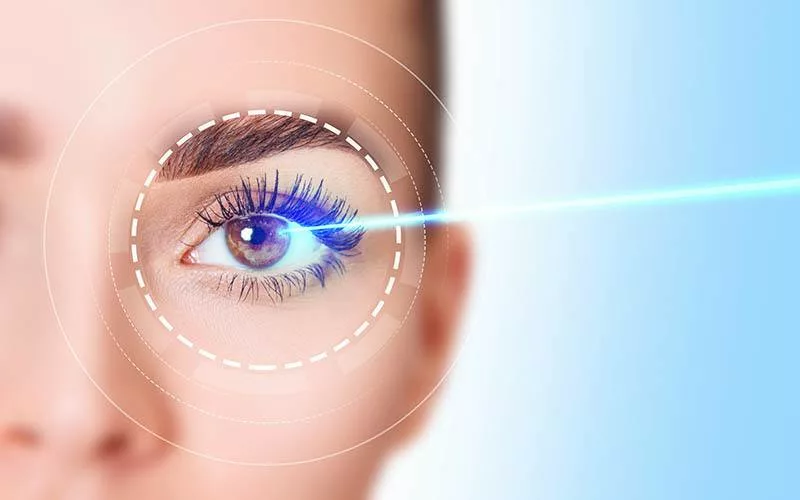What is LASIK? Is it good for me?
LASIK (Laser Assisted In Situ Keratomileusis) is a popular and widely performed surgical procedure designed to correct refractive errors in the eye, reducing or eliminating the need for glasses or contact lenses. This revolutionary surgery utilizes laser technology to reshape the cornea, the transparent front part of the eye, thereby improving the way light rays enter the eye and focusing on the retina.
 |
| You Should Know This, If You Are Going For LASIK |
LASIK Procedure Overview:
Step 1: Preoperative Evaluation
Before undergoing LASIK, a thorough eye examination is conducted to assess the overall health of the eyes and determine if the patient is a suitable candidate for the procedure. Factors such as corneal thickness, eye prescription stability, and general eye health are carefully evaluated.
Step 2: Creating the Flap
LASIK involves creating a thin flap in the cornea, which is lifted to expose the underlying tissue. Traditionally, a microkeratome, a mechanical device, was used to create the flap. In modern LASIK, a femtosecond laser is often employed for greater precision in flap creation.
Step 3: Reshaping the Cornea
Once the flap is lifted, an excimer laser is used to remove precise amounts of corneal tissue. This reshaping process is customized based on the patient's specific refractive error—myopia (nearsightedness), hyperopia (farsightedness), and astigmatism can all be addressed through LASIK.
Step 4: Flap Replacement
After the cornea is reshaped, the surgeon carefully repositions the flap. The natural adhesion of the corneal tissue helps hold the flap in place, and stitches are usually unnecessary.
Advantages of LASIK:
1. Quick Recovery: Most patients experience improved vision immediately or within a day after LASIK, with minimal discomfort.
2. Reduced Dependence on Glasses or Contact Lenses: LASIK is known for its ability to significantly reduce or eliminate the need for corrective eyewear.
3. High Success Rates: LASIK has a high success rate, and many patients achieve 20/20 vision or better.
4. Rapid Results: The procedure is generally quick, often taking only about 15 minutes per eye.
Side Effects and Risks:
While LASIK has been proven to be a safe and effective procedure for many, it is important to recognize that, like any surgical procedure, it comes with potential risks and side effects. Here are some common considerations:
1. Dry Eyes:
Description: LASIK can reduce tear production, leading to temporary or, in some cases, longterm dry eyes.
Management: Artificial tears and prescription eye drops can help alleviate dry eye symptoms.
2. Glare and Halos:
Description: Some patients may experience glare, halos, or sensitivity to light, especially at night.
Management: These symptoms often improve with time as the eyes heal. In some cases, additional treatments may be required.
3. Flap Complications:
Description: Issues related to the creation or positioning of the corneal flap can occur, though they are rare.
Management: Surgeons take great care during the procedure to minimize the risk of flap complications. Postoperative care and followup appointments are crucial for monitoring and addressing any concerns.
4. Overcorrection or Undercorrection:
Description: While LASIK is highly precise, there is a possibility of the eyes being overcorrected or undercorrected.
Management: Enhancements or touchup procedures may be necessary to finetune vision, especially in cases where the initial correction was not sufficient.
5. Regression:
Description: In some cases, the eyes may revert to their preoperative refractive state over time.
Management: Enhancements or retreatment can address regression, but it is essential to manage expectations and understand that some degree of change may occur.
6. Infection and Inflammation:
Description: Though rare, there is a risk of infection or inflammation following LASIK.
Management: Strict adherence to postoperative care instructions, including antibiotic and antiinflammatory medications, helps minimize these risks.
7. Underlying Health Conditions:
Description: Certain systemic health conditions or preexisting eye conditions may increase the risk of complications.
Management: A comprehensive preoperative evaluation helps identify and manage potential risk factors.
Conclusion:
LASIK has transformed the lives of millions by providing a safe and effective means of correcting refractive errors. The vast majority of patients experience improved vision and a reduced reliance on glasses or contacts after the procedure. However, it is crucial for individuals considering LASIK to undergo a thorough consultation with a qualified eye care professional to assess their suitability for the surgery and to discuss potential risks and benefits.
Advancements in laser technology, surgical techniques, and preoperative assessments continue to enhance the safety and precision of LASIK. As with any medical procedure, success and satisfaction are influenced by careful patient selection, adherence to postoperative care instructions, and regular followup appointments.
Patients considering LASIK should have realistic expectations and engage in open communication with their eye care provider. While the risks associated with LASIK are relatively low, a comprehensive understanding of potential side effects empowers individuals to make informed decisions about their eye care and overall wellbeing.


